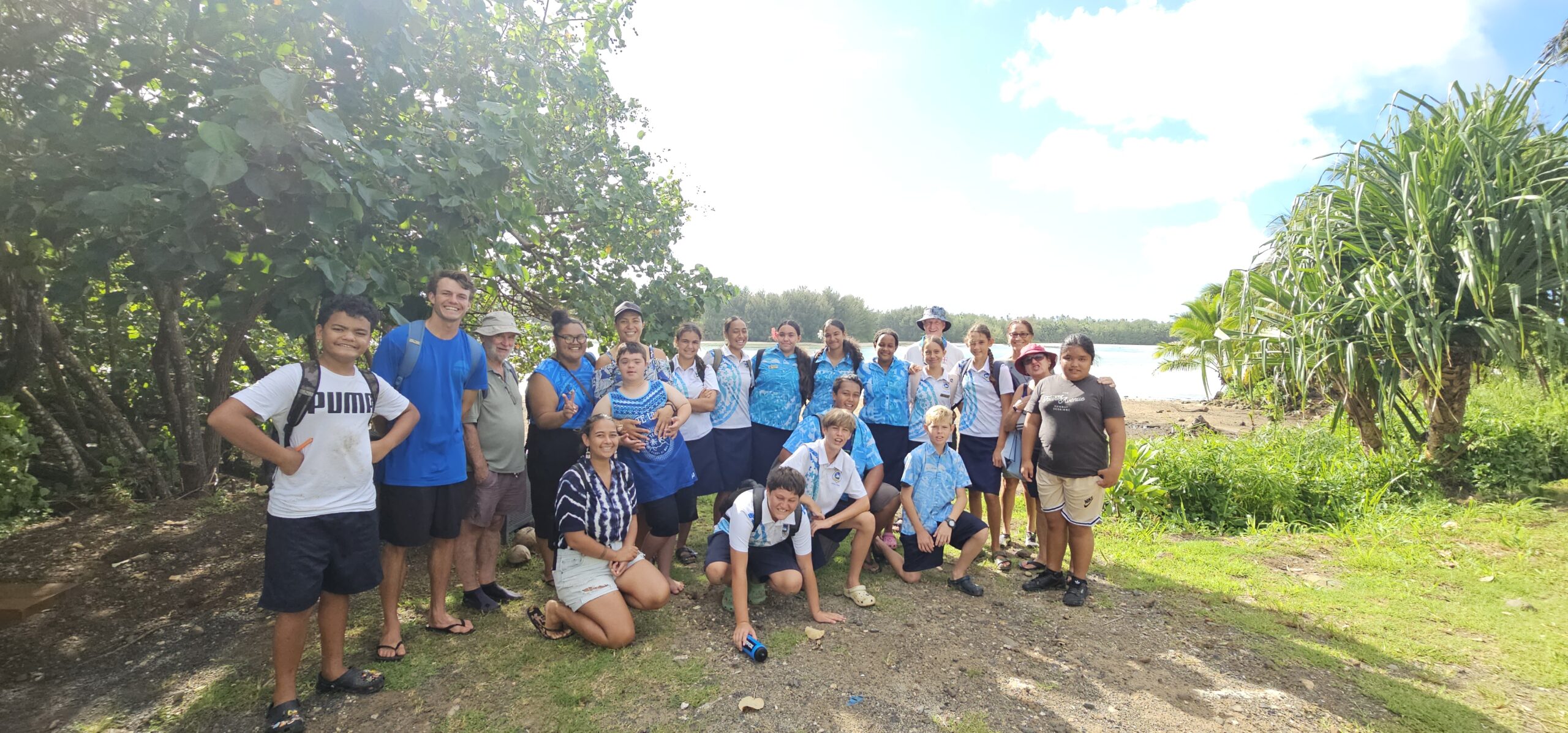Te Ipukarea Society: Kō’iti Raukura educational programme inspires future guardians
Sunday 17 March 2024 | Written by Te Ipukarea Society | Published in Environment, National

The Kō’iti Raukura (Red Fiddler Crab) educational programme which will run for six weeks began last week. TIS/24031510
A six-week Kō’iti Raukura (Red Fiddler Crab) educational programme began last week. The collaboration between Muri Environmental Care, Natural Heritage Trust (NHT), Te Ipukarea Society and Te Uki Ou School aims to inspire and educate students about local biodiversity.
The focus is on the Aroko Saltwater Marsh, the last remaining habitat of its kind on Rarotonga. Budding with life, crabs, snails, octopus, birds, and fish all call the marsh their home. Science, mathematics, geography, and the arts are all brought together in this cross-curricular programme making the classes both practical and informative.
Last Tuesday at low tide the Year 9 students explored the marsh discussing the habitat and observing the Kō’iti Raukura. With guidance from Gerald McCormack, they were able to distinguish the males from the females as the males have one significantly larger red claw. Fighting, burrowing, and eating were also observed, posing some questions about what the Kō’iti Raukura eat and how they create their intricate burrow systems. McCormack, a biodiversity expert from the National Heritage Trust, was on hand to explain their habits, and behaviours and to differentiate between the two species that live in the marsh.
The students identified that birds and fish pose a threat to the Kō’iti Raukura but the largest threat is humans! Many people are unaware of the Kō’iti Raukura habitat and regularly drag boats and walk across their complex burrowing system in the Aroko Saltwater Marsh. Although humans are the problem, the motivated students also realised humans were the solution. The class was excited to learn they were going to be part of the solution, raising awareness about Kō’iti Raukura conservation.
On Tuesday they worked in the classroom to discuss what they observed in the field covering topics such as habitat, their physical characteristics, the two variants, their behaviour, diet and ecosystem. After observing their wrestling behaviour, the students got an opportunity to ‘play crab’ engaging in a few rounds of ‘sock wrestling’. Each student put a sock on their foot and the objective was to remove the sock off their opponent’s foot first. After the one-on-one matchups, it became a class affair with an all-inclusive round of boys versus girls. Wrestling to protect themselves and fellow crabs, the Apii Te Uki Ou field briefly turned into what looked like a very active Kō’iti Raukura colony.
The students will return to the marsh next week to use line transect surveying techniques and a quadrat to collect data about the Kō’iti Raukura population. Population size, distribution, and observing whether the crabs have also been affected by the heavy deposit of sediment coming from the surrounding hills will be covered in the geo-stats session. Following the data collection and analysis the students will present their findings in a creative way of their choosing and then work together to create art pieces informing locals and tourists of the very important habitat of the Aroko Saltwater Marsh. The community led initiative will then hope to install the art pieces at the marsh site to install hope for future Kō’iti Raukura generations!




















































